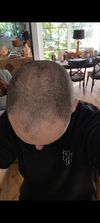community New Interview with Stemson Therapeutics CEO Geoff Hamilton - best chance of hair cloning
The conversation discusses hair loss treatments, including Minoxidil, finasteride, and RU58841. It highlights an interview with Stemson Therapeutics CEO Geoff Hamilton about advancements in hair cloning technology.
